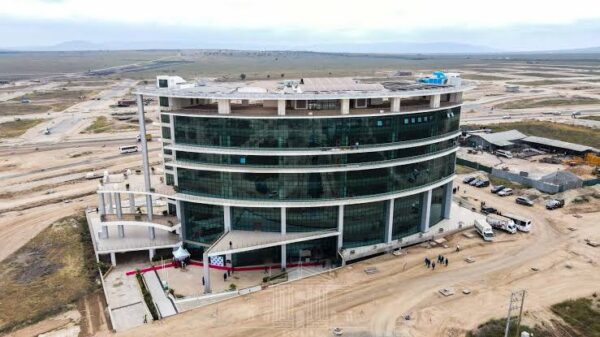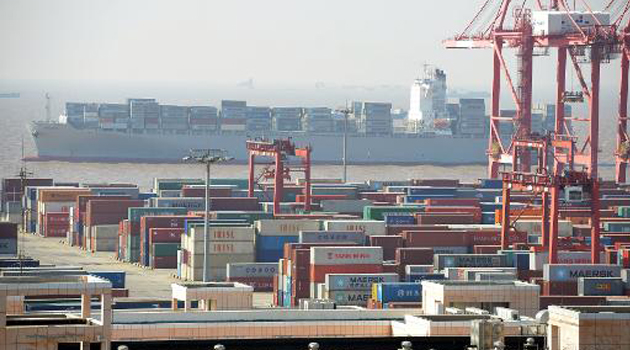The surplus rose 14.0 percent year-on-year in January to $31.86 billion, the General Administration of Customs said, rebounding from a decline the previous month.
Exports jumped more than expected, increasing 10.6 percent to $207.13 billion, while imports were up 10.0 percent at $175.27 billion.
The median forecast in a survey of 11 economists by The Wall Street Journal predicted only a 0.1 percent increase in exports, which had risen 4.3 percent in December. In that month, the overall trade surplus fell 17.4 percent year-on-year to $25.64 billion.
The strong results surprised economists, with some suggesting they were driven by disguised capital flows instead of real demand.
“We find this strong level of export growth puzzling,” Zhang Zhiwei, economist at Nomura International in Hong Kong, wrote in an analysis, adding it was “unclear to what extent” it indicates “true strength” in China’s economy.
“At this stage, we believe capital inflows may have contributed at least partly to January’s strong export growth numbers.”
Analysts have long taken Chinese economic statistics with more than a grain of salt.
Early last year unusual swings in trade figures were seen as driven by over-invoicing by exporters and importers in a bid to disguise capital flows, a practice the government is believed to have cracked down on later.
“While this could reflect an improving external demand, we suspect that export over-invoicing activities have re-emerged,” Liu Li-Gang and Zhou Hao of ANZ bank wrote on January’s trade data.
“It is important to note that China’s regional trading partners such as Taiwan and South Korea registered very weak January exports,” they added.
But other analysts endorsed the data. Economists at Barclays said in a research note that they “do not see clear evidence of fake trades”.
“The growth rebound was broad based by export destination and products,” they added, noting that shipments to the European Union, the United States and Japan all accelerated in January.
“Recovery in the developed world is underway.”
Chinese shares rose Wednesday, with the benchmark Shanghai Composite Index closing 0.30 percent higher.
China’s annual trade in goods passed the $4 trillion mark for the first time in 2013, when the country probably surpassed the United States as the world’s largest physical trading nation.
But recent signals for the economy have been mixed.
China’s official purchasing managers’ index (PMI), a gauge of its manufacturing sector, slipped to a five-month low in January, confirming a slowdown in factory activity.
British bank HSBC, meanwhile, announced that China’s manufacturing sector shrank in January for the first time in six months, with its PMI index recording 49.5, placing it in contraction territory.
January’s trade and manufacturing results came after China’s economy registered flat growth of 7.7 percent in 2013, maintaining its slowest expansion in more than a decade.
Gross domestic product (GDP) expansion for the October-December quarter also came in at 7.7 percent, the National Bureau of Statistics said last month, slowing from 7.8 percent in the previous three months.
The 2013 GDP figure was the same as that for 2012 — which was the worst rate of growth since 1999 — although it exceeded the government’s growth target for the year, which was declared as 7.5 percent.
China’s economy is expected to slow to 7.5 percent this year, according to the median forecast in a survey of 14 economists by AFP last month.
China is a key driver of the global economy but is widely seen as facing slower expansion in the years ahead.
Its leaders have vowed to change its growth model so that consumers and other private actors play the leading role, rather than huge and often wasteful state investment.




































